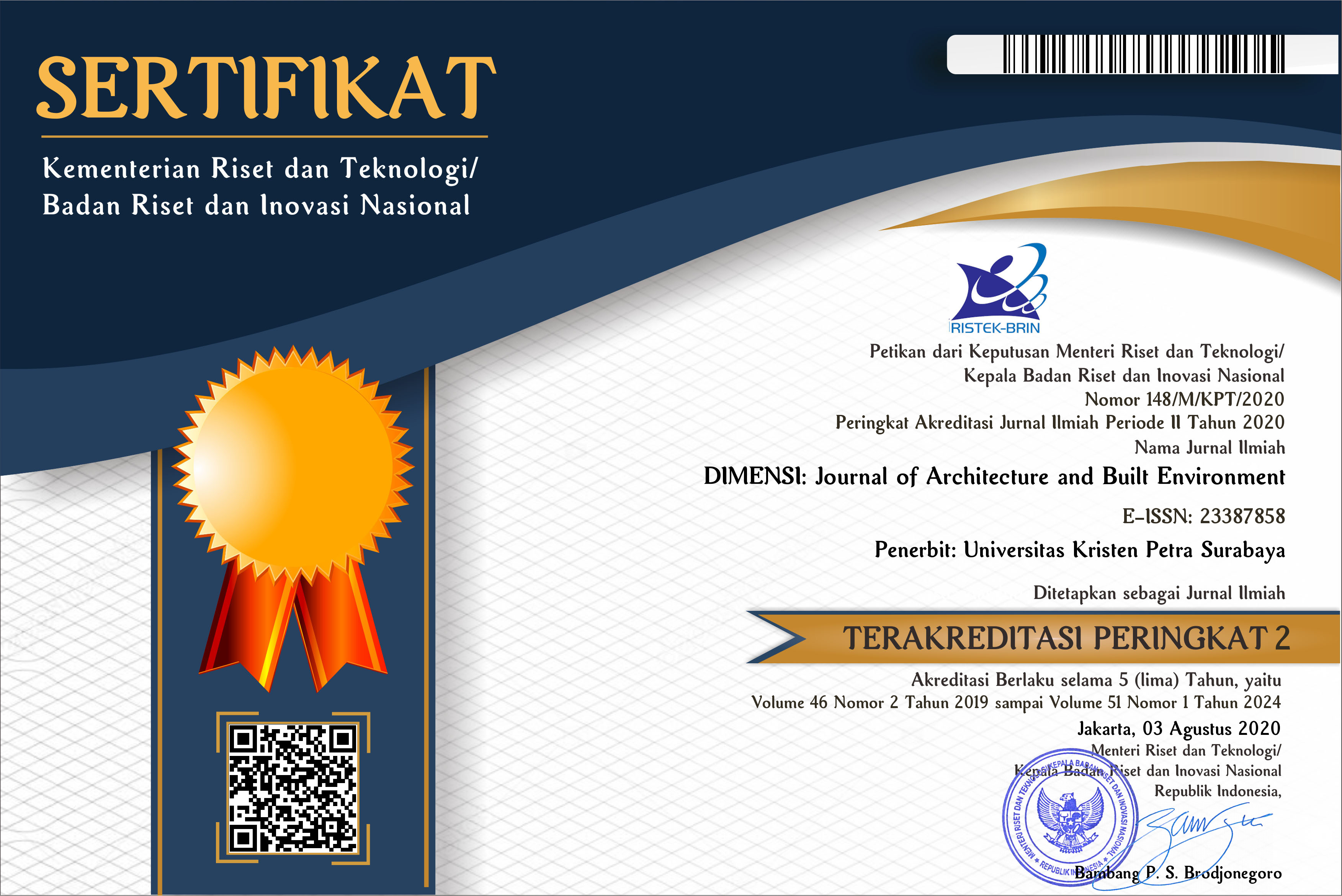KAJIAN POLA PERMUKIMAN KHAS KAMPUNG LENGKONG ULAMA, SERPONG, BANTEN
 :
:
https://doi.org/10.9744/dimensi.39.1.31-36
Keywords:
Historic village, conservation, rural urban.Abstract
Who knows about Kampong Lengkong Ulama, Serpong? Perhaps it has been known by "the sarong people", because it echoed only in the religious media. In 1983, there was a history book about this village, included essays and translations from ancient texts, written by local leaders; Ustadz Mukri Mian, without published. In 2009, there was a book written by Indonesian archaeologist; Uka Tjandrasasmita. Until now, he is the only person who researches about this village from archaeology perspective. He did not mention about the typical pattern of this village, as Ustadz Mukri Mian described in his book, that the position of the buildings follows the Qibla. Is the settlement pattern of Kampong Lengkong Ulama follows the Qibla? This paper is a new research to study the pattern of this village. This study uses qualitative method from architecture perspective. The research conclusion is that the pattern of Kampong Lengkong Ulama really follows the Qibla direction and situated by the river that also follows the Qibla. In addition, the placement of the tomb of the founder of this village on the hill has the same concept with the general concept in Javanese community and kingdoms about the world and the hereafter.Downloads
Download data is not yet available.
Downloads
How to Cite
Muhammar, K. (2013). KAJIAN POLA PERMUKIMAN KHAS KAMPUNG LENGKONG ULAMA, SERPONG, BANTEN. DIMENSI (Journal of Architecture and Built Environment), 39(1), 31-36. https://doi.org/10.9744/dimensi.39.1.31-36
Issue
Section
Articles
License
Authors who publish with this journal agree to the following terms:
- Authors retain copyright and grant the journal right of first publication with the work simultaneously licensed under a Creative Commons Attribution License that allows others to share the work with an acknowledgement of the work's authorship and initial publication in this journal.
- Authors are able to enter into separate, additional contractual arrangements for the non-exclusive distribution of the journal's published version of the work (e.g., post it to an institutional repository or publish it in a book), with an acknowledgement of its initial publication in this journal.
- Authors are permitted and encouraged to post their work online (e.g., in institutional repositories or on their website) prior to and during the submission process, as it can lead to productive exchanges, as well as earlier and greater citation of published work (See The Effect of Open Access).


















